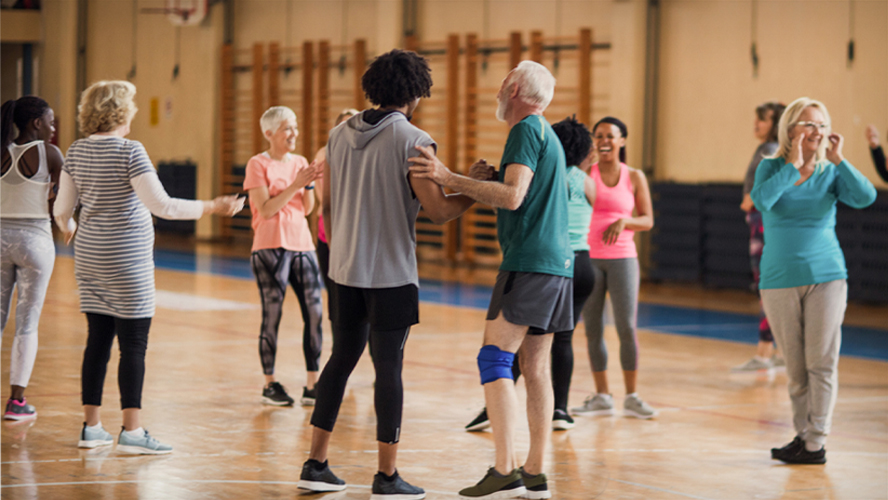
Exercise plays a crucial role in stroke rehabilitation, helping restore movement and improve quality of life. However, many stroke survivors struggle with physical activity due to limited access to exercise programs, lack of motivation, and insufficient social support. Researchers from UHN’s KITE Research Institute are exploring dance as a more engaging and effective exercise alternative for people with chronic stroke.
The research team interviewed 18 chronic stroke participants after a 10-week adapted dance program to their perceptions of dance as exercise. Designed to improve gait and balance, the program included a seated warm-up, standing ballet-barre exercises, choreography, partner dance skills, and group exercises in various dance styles, such as ballet, contemporary, jazz, folk, and ballroom.
Through the interviews, researchers identified three key themes regarding participants’ perceptions of dance and exercise. First, participants viewed dance as a form of exercise, noting that it involved diverse movements and challenges while offering functional benefits like improved balance and mobility. Second, dance was recognized as more than just a physical activity. The inclusion of unique elements, such as choreography and fluidity of movement, made it a unique and engaging experience. Finally, dance fostered a sense of connection, promoting self-expression, social engagement, and personal growth, which contributed to both physical and emotional well-being.
These findings suggest that dance could be a powerful tool in stroke rehabilitation, supporting both physical recovery and emotional well-being. By integrating dance into rehabilitation programs, health care providers could offer people recovering from a stroke a more engaging way to improve mobility, balance, and overall quality of life.
Caitlin Elmslie is the first author of the study and a former Master of Science student in Occupational Science and Occupational Therapy at the University of Toronto.
Lara McCallion is the second author of the study and a former Master of Science student in Occupational Science and Occupational Therapy at the University of Toronto.
Dr. Kara Patterson is the senior author of the study and a Senior Scientist at the KITE Research Institute. She is also an Associate Professor in the Department of Physical Therapy at the University of Toronto..
This work was supported by UHN Foundation and the Canadian Partnership for Stroke Recovery.
Elmslie C, McCallion L, Vaughan-Graham J, Patterson KK. Dance harnesses humanity in exercise: perceptions of dance following an adapted dance program for people with chronic stroke. Arts Health. 2025 Feb 6:1-17. doi: 10.1080/17533015.2025.2461687.




